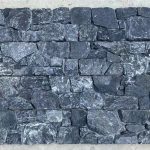Introduction:
Cultured stone, also known as manufactured stone or faux stone, has become a popular choice for homeowners, builders, and designers looking to add a touch of elegance and sophistication to their properties. Made from a blend of natural aggregates, pigments, and chemical additives, cultured stone mimics the look and feel of natural stone while offering more versatility and affordability. However, like any other building material, cultured stone requires regular maintenance to preserve its beauty and structural integrity. In this comprehensive guide, we will explore the various aspects of cultured stone maintenance, including cleaning, sealing, repairing, and protecting this versatile material.
Cleaning Cultured Stone:
Regular cleaning is essential to keep cultured stone looking its best and to prevent the buildup of dirt, grime, mold, and mildew. Here are some tips for cleaning cultured stone effectively:
1. Start by removing any loose dirt and debris from the surface of the stone using a soft-bristled brush or a vacuum cleaner.
2. Mix a solution of mild dish soap or stone cleaner with warm water in a bucket.
3. Use a soft sponge or cloth to apply the cleaning solution to the cultured stone, working in small sections.
4. Gently scrub the stone in a circular motion to lift dirt and stains. Avoid using abrasive cleaning tools that can damage the surface of the stone.
5. Rinse the stone thoroughly with clean water to remove any soap residue.
6. For Benefits of using stone veneer in home decor , consider using a commercial stone cleaner or a poultice made from baking soda and water.
7. Avoid using harsh chemicals or acidic cleaners on cultured stone, as these can damage the surface and alter the color of the stone.
Sealing Cultured Stone:
Sealing cultured stone is an important step in maintaining its appearance and protecting it from water damage, staining, and efflorescence. Here's how to properly seal cultured stone:
1. Check the manufacturer's recommendations for the appropriate sealer to use on your specific type of cultured stone.
2. Clean the stone thoroughly to remove any dirt, debris, and stains before applying the sealer.
3. Apply the sealer evenly to the surface of the stone using a brush, roller, or sprayer, following the manufacturer's instructions.
4. Allow the sealer to dry completely before applying a second coat if necessary.
5. Test the sealer in a small, inconspicuous area first to ensure compatibility and desired results.
6. Reapply the sealer every 1-3 years or as recommended by the manufacturer to maintain optimal protection.
Repairing Cultured Stone:
Despite its durability, cultured stone can still be susceptible to damage from impact, weathering, and other external factors. Knowing how to repair cultured stone can help you address minor issues before they escalate. Here are some tips for repairing cultured stone:
1. Assess the extent of the damage and determine whether it can be repaired or if replacement is necessary.
2. For minor cracks or chips, use a high-quality stone epoxy or adhesive to fill in the damaged area and blend it with the surrounding stone.
3. Allow the adhesive to dry completely before sanding and smoothing the repaired area to match the texture of the surrounding stone.

4. For larger repairs or missing pieces, consider contacting a professional stone mason or contractor to assess the damage and provide a more comprehensive repair solution.
5. Regularly inspect your cultured stone for signs of damage or wear and address any issues promptly to prevent further deterioration.
Protecting Cultured Stone:
In addition to cleaning, sealing, and repairing cultured stone, there are other measures you can take to protect it and prolong its lifespan. Here are some tips for protecting cultured stone:
1. Avoid using pressure washers or abrasive cleaning tools that can damage the surface of the stone.
2. Trim back vegetation and foliage near the cultured stone to prevent moisture buildup and mold growth.
3. Install gutters, downspouts, and proper drainage systems to redirect water away from the stone and prevent water infiltration.
4. Apply a water repellent or moisture barrier to the backside of the cultured stone to protect it from water damage and efflorescence.
5. Inspect the stone regularly for signs of wear, damage, or discoloration and address any issues promptly.
Conclusion:
Cultured stone is a versatile and durable building material that can enhance the aesthetics and value of any property. By following the tips and guidelines outlined in this comprehensive guide, you can effectively maintain and protect your cultured stone for years to come. Remember to clean, seal, repair, and protect your cultured stone regularly to ensure it retains its beauty and structural integrity. With proper maintenance and care, your cultured stone will continue to be a timeless and elegant addition to your home or building.
